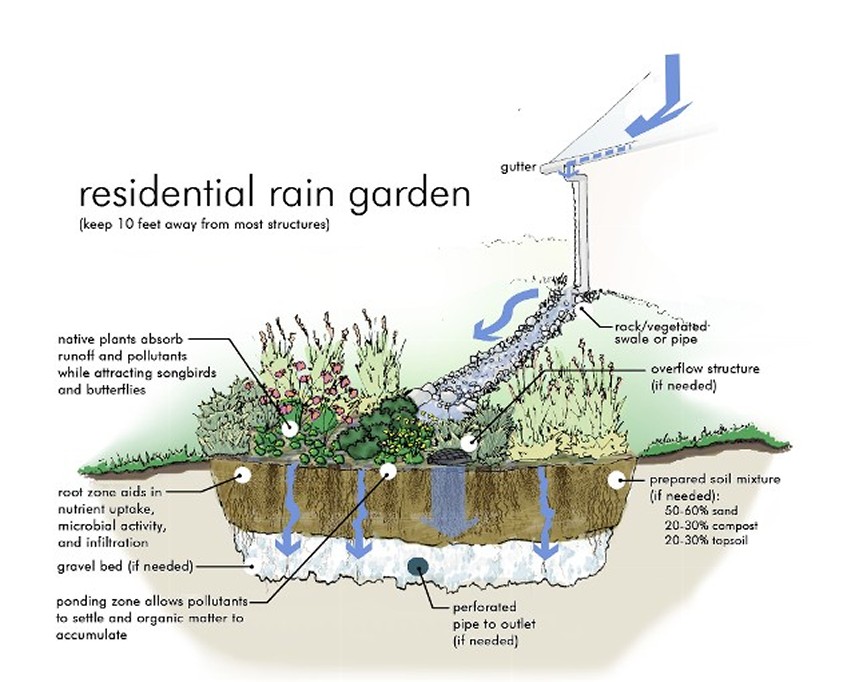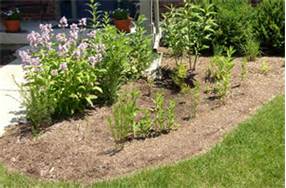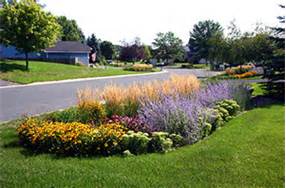|
 A rain garden is usually a small garden that takes advantage of rainfall and stormwater runoff from your roof gutters, driveway and sidewalks. Rain Gardens are ideally located close to the source of the runoff and serve to slow the stormwater as it travels downhill, giving the stormwater more time to infiltrate and less opportunity to gain momentum and erosive power. A rain garden is usually a small garden that takes advantage of rainfall and stormwater runoff from your roof gutters, driveway and sidewalks. Rain Gardens are ideally located close to the source of the runoff and serve to slow the stormwater as it travels downhill, giving the stormwater more time to infiltrate and less opportunity to gain momentum and erosive power.
On the surface, a rain garden looks like an attractive garden. It may support habitat for birds and butterflies, it may be a formal landscape amenity or it may be incorporated into a larger garden as a border or as an entry feature. What makes it a rain garden is in how it gets its water and what happens to that water once it arrives in the garden.
To construct a garden, the ground is excavated and the clean weed & seed free planting soil is imported to the site. A liner may or may not be used, depending on the local conditions. The success of the garden is greater when you start with healthy and smaller, rather than larger, plants. Some plants listed are successful in rain gardens only when they are installed small and have a chance to adapt to the conditions as they grow.
Plants with deep fibrous roots tend to have a competitive advantage in a rain garden and provide the most cleaning and filtration benefits to the environment. Typical rain gardens are populated with natives or native cultivars because those are most well adapted to a locality, but other ornamental horticultural plants that are non-invasive but able to grow in the garden conditions can also be excellent choices.
Most of the examples of rain gardens that are available to review are populated with either herbaceous perennials, woody shrubs or trees. This does not mean that annuals are not a possible choice for such gardens; rather it means that the gardens constructed have been designed for habitat and low maintenance goals rather than purely seasonal aesthetics and color effects. Some annuals are good candidates for a higher maintenance version of a rain garden.

|




